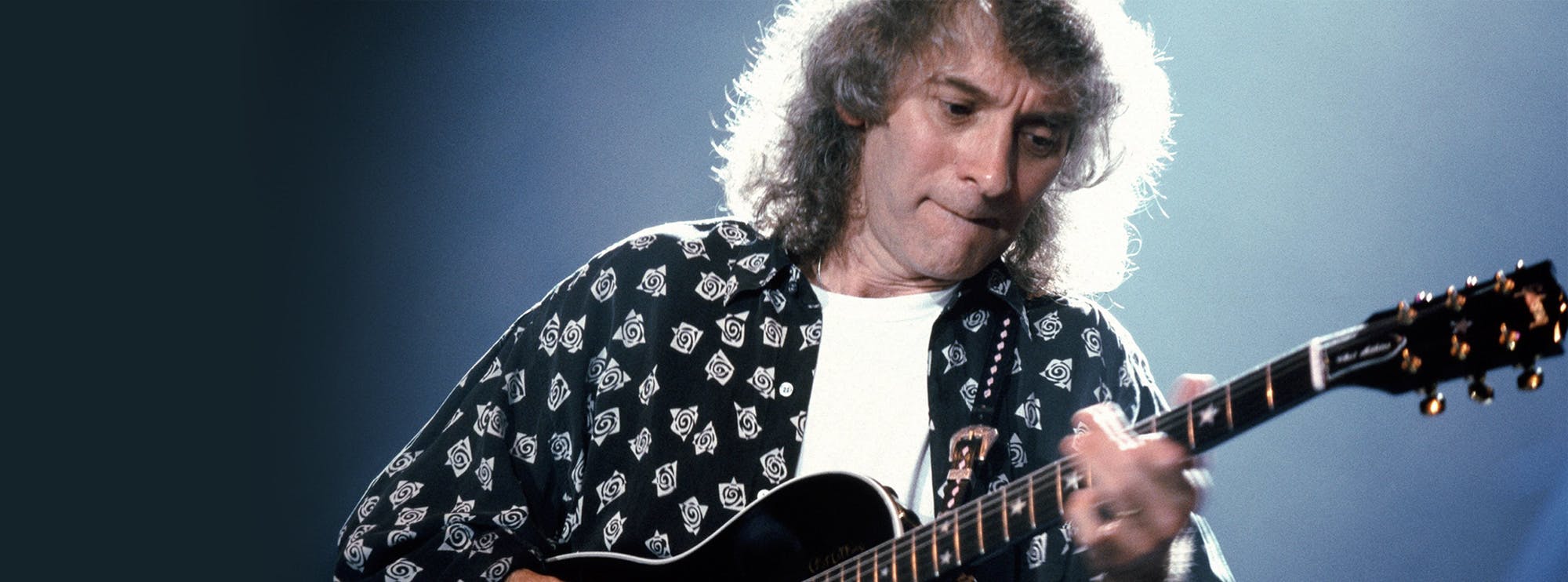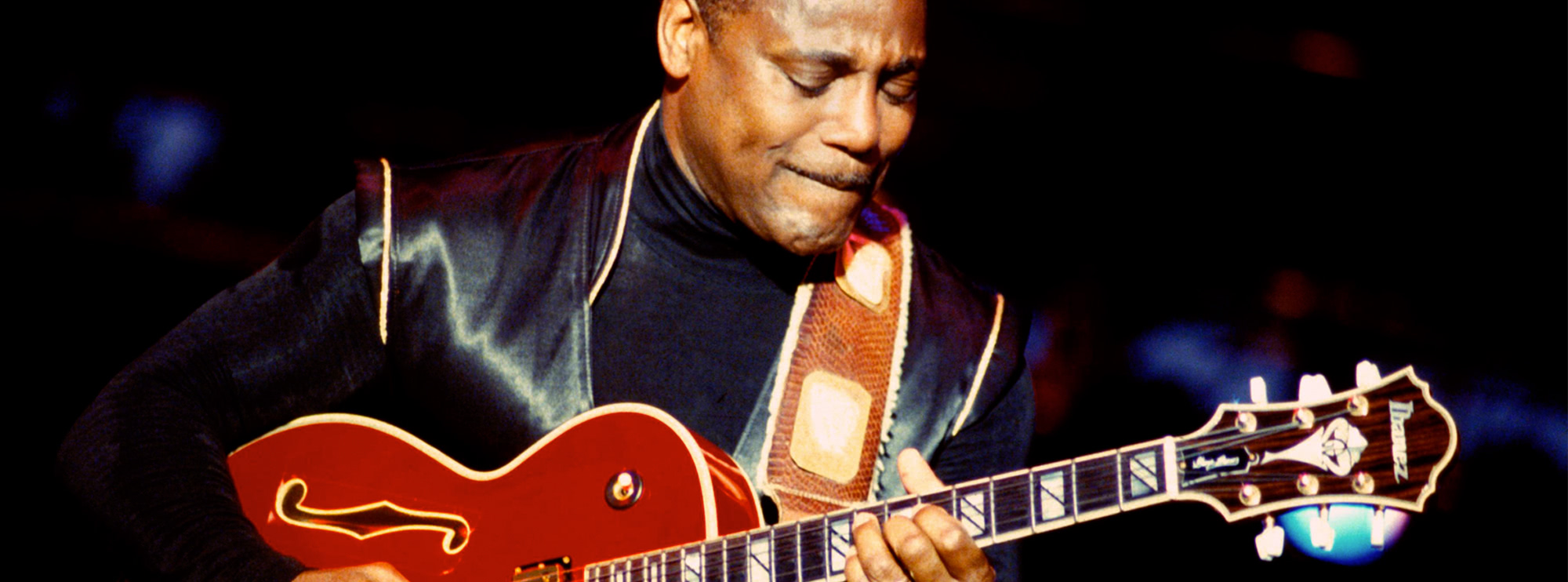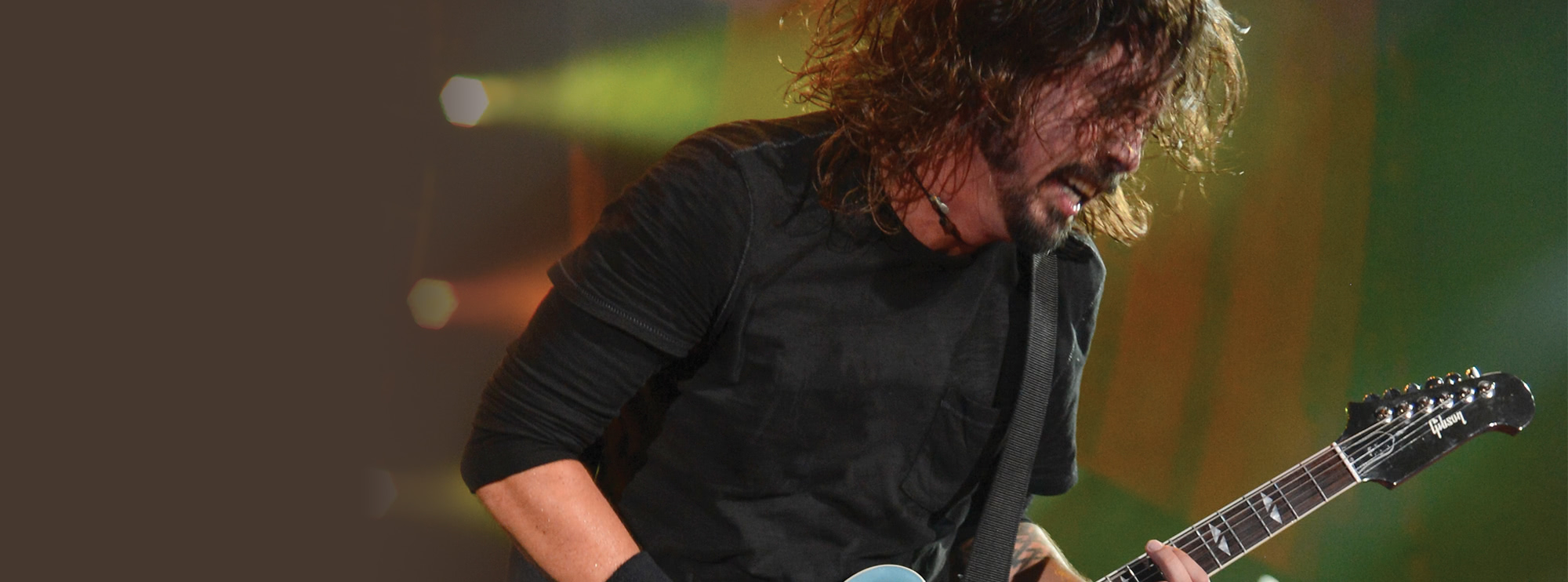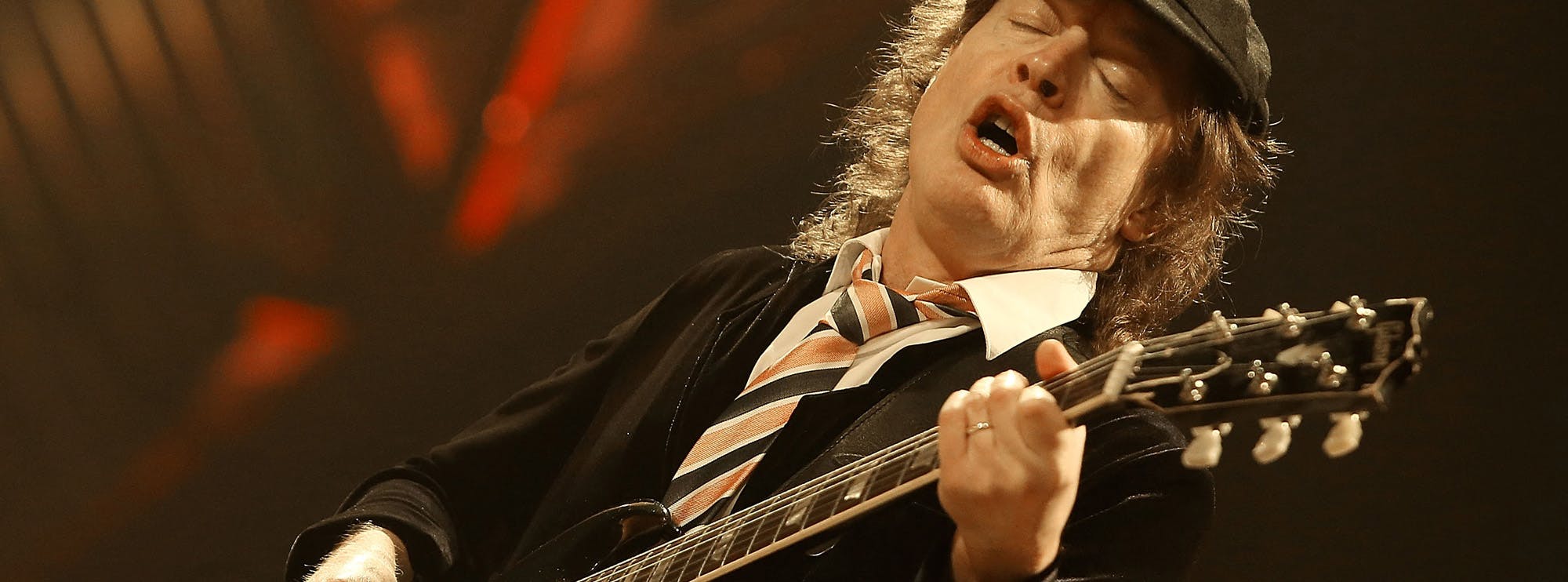Originally known as "The White Snake Band" — a backing band formed to support ex-Deep Purple lead vocalist David Coverdale on his solo tours — Whitesnake was in the early days, primarily known as a blues/rock outfit. They scored early chart success with their cover of the ballad "Ain't No Love in the Heart of the City." The core of the band featured bassist Neil Murray, and guitar duo Bernie Marsden and Micky Moody. At various times the band has included several members of Deep Purple, including Ian Paice and John Lord as well as legendary drummer Cozy Powell. The band gained success with such albums as 'Ready an' Willing,' 'Come an Get It,' 'Saints and Sinners' and 'Slide it In.' They also had radio success with such classic single tracks as "Don't Break My Heart Again," "Fool For Your Loving," and "Here I go Again." The latter two were also re-recorded at later dates during different versions of the band.
The band changed direction with its sound for their self-titled album, often known as '1987.' Coverdale had enlisted ex-Thin Lizzy guitarist John Sykes who re-recorded guitar parts for the US release of 'Slide it In.' Sykes and Coverdale wrote '1987' together, and was the bands biggest album to date. Boasting songs such as "Still of the Night," "Is This Love," "Give Me All Your Love Tonight," plus new versions of "Here I go Again" and "Crying in the Rain.' The album featured a more hard rock, 80's "polished" sound, abandoning their bluesy sound heard on previous albums. Sykes' guitar playing on this album was incredible, showcasing his aggressive rhythm style, soulful vibrato and machine-like alternate picking. Sadly Sykes never got to tour the album, due to Coverdale firing the entire band following its release.
Like such artists as Ozzy Osbourne and David Lee Roth, the Whitesnake guitar position was one of the most converted and revered positions to hold. Coverdale has enlisted the elite of the guitar world, including the original guitarists Bernie Marsden and Micky Moody, and John Sykes from the bands most successful period. Following Sykes untimely departure Coverdale hired Adrian Vandenberg and ex Dio guitarist Vivian Campbell. Following the departure of Campbell, Coverdale turned to guitar legend Steve Vai, who recorded and the 1989 album 'Slip of the Tongue,' as well as performing on the tour supporting the album's release. More recently Coverdale has recruited such heavyweights as Winger guitarist Reb Beach, Doug Aldrich and their current axeman Joel Hoekstra.
For this Tech Session, I choose to focus on the '1987' period of the band, looking at the ferocious playing style of John Sykes. As well as a monster guitarist, Sykes was also a very accomplished singer and composer, helping to pen some of the bands biggest hits. Sykes has an aggressive style. His rhythm and riffs are very tight and heavy, boasting a huge guitar tone. His lead playing can be very soulful and melodic, but also very fast and aggressive. He favours such techniques as pinched and natural harmonics, fast trills, wide aggressive vibrato, two-handed tapping and pentatonic blues-infused licks. Sykes also has the picking hand to die for, executing impressive scale runs with speed and ease! For our track, I used such classic tracks as "Still of the Night", "Give Me All Your Love Tonight" and "Is This Love" as reference tracks. I have to admit, a little Steve Vai influence did creep in with a reference to "Judgment Day."
Bars 1-9 feature our main riff. This riff is classic 80's Whitesnake and is based around a guitar and bass unison riff using notes from the E blues scale. The sixteenth note driving rhythm of this riff works in great contrast to the powerful driving drum groove. The riff also features either a chord figure or a climbing octave figure to conclude each round of the riff.
Bars 10-15 includes our chorus progression, and demonstrates a common technique heard in many of Sykes rhythm parts. The main riff is based around the chords of A minor and F major, and sees us performing a repeating figure under both the accompanying chords. The riff is constructed from two-note "diad" chords, and gives the listener a repeating hook whilst the underlying harmony moves. For the second half of the chorus we modulate to D minor, with another melodic riff pattern being executed using diatonic thirds. The riff concludes with the chords of E5 and G5.
Bars 16-21 include a new riff sections that includes a climbing figure on the 4th string against a driving 5th string root. This Zepplin-esque riff has a very powerful sound, with the mood fo the riff sifting as the intervals change. This section concludes with the triads of D/F#, F major and Bb major; Pay attention to the 2/4.
Bars 22-30 reintroduce our main riff; Pay attention here to the timing, as we kick off the climbing octave riff, followed by a drum break, and back into the main riff. Its very important for you to concentrate on your counting, and make sure you keep the riff tight and defined. This time the riff concludes to an A5 chord, as we head into the middle 8-ballad section.
Bars 31-38 kicks off our ballad section with some clean chord arpeggios, embellished with lush chorus and reverb. In this section we see some advanced chord extensions, including Amadd9, Fmajor13, Cmaj9/#11 and E minor 9th.
Bars 38-46 introduce our first solo, demonstrating how Sykes approaches a ballad feel. Notice the long searing bends, expressive vibrato and carefully chosen target notes. This section concludes with a bar long pick scrape, preparing us for the next heavy section.
Bar 47-54 features an epic riff that screams "Still of the Night"! This is another very unique approach to rhythm that Sykes applies. He uses the E minor tonal centre, but borrows triads from other keys, to change the feel of the passage. Here we are treating E minor as chord VI, III and II respectively, implying Aeolian, Phrygian and Dorian.
Bars 54-62 features our main solo, and is chock full of classic Sykes licks. This solo sticks predominantly to E Aeolian, with even tho other modes are being implied. The solo starts with the focus on note choice and feel, but features a signature descending trill figure. This is followed by string bends and pinched harmonics, building intensity and aiding an aggressive sound. The solo concludes with a huge alternate picking scale run, climaxing with a fast tapping lick. Although Sykes is a great picker, some of his faster runs are not too synchronised; he's aiming more for an aggressive climb between two points. I would suggest getting the position shifts under your fingers and gradually build up the speed.
Bars 63-67 conclude the track with the final round of our main riff before concluding to the E5 chord.
The Gear:
Sykes has always had a huge tone and is mainly a Les Paul user favouring a 1978 black Les Paul custom. Although known mainly for using Marshall amps, during the 1987 period, Sykes favoured Boogie's using Mk IIC+ and Coliseums. He would also split the signal with chorus on one side of his rig. For our session, I used my 19-year-old Music Man Axis Super Sport into a Mesa Boogie JP2-C. This ran into a Two Notes Torpedo studio where I used either a paired stereo Marshall IR, plus dual mic'd Celestion IR's. I also used a Sound Toys MicroShift to add some detune for that classic processed 80's tone.
About The Tutor
Tutor Profile
Jamie Humphries
Jamie is one of the mainstays of LickLibrary, having a stream of hugely successful best selling DVDs, Jamie is best known as Brian May's sideman who he's played shows with all over the world. Aside from this Jamie is a hugely popular clinician working all over the world with Ernie...



